The 1983 Prudential Cup, aka the 1983 Cricket World Cup, is one of, if not the most iconic tournament in the history of sports in India. The men in blue (still in white) went into the competition as massive underdogs and came out the other side as the world champions.
While India was a promising team in the early 80s, not many experts rated them in the new ODI format. But under the leadership of the new captain Kapil Dev, the ‘Kapil’s Devils’ got the job done, won the tournament, and ensured that cricket would be the most popular sport in the developing country for decades to come.
The shockwaves of the ‘83 World Cup in England are still affecting us. Not only did the World Cup win make cricket THE sport in India, but also made the national team a powerhouse in world cricket. Even today, wherever an underdog team does well in a World Cup, they are compared to the 1983 India team. The India World Cup win 1983 might just be one of the finest moments in the history of cricket.
But we are not here to talk about how the 1983 World Cup changed the trajectory of Indian cricket for generations to come. We are instead here to talk about a mini-series hidden within the World Cup. A three-match series between two nations on the opposite ends of the success spectrum, and how the result of this series affected the trajectory of cricket for these nations.
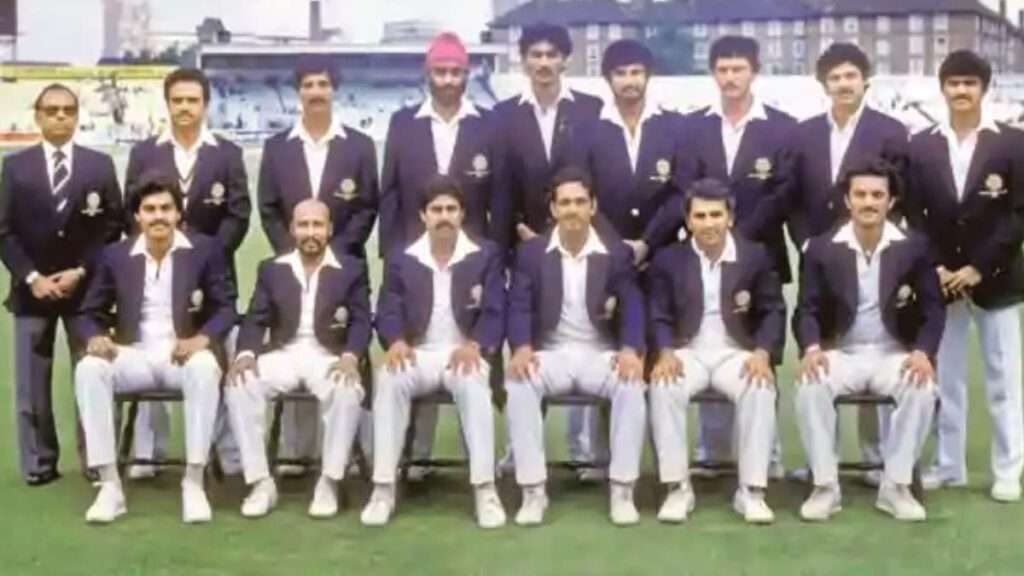
IND vs WI 1983 World Cup Series
The series we are talking about is India vs West Indies. The two teams battled it out on three occasions in the 1983 World Cup, thus making it an ODI series, of which there was one clear winner.
In the fourth match of the tournament, India took on the mighty West Indies. The Windies came into the third-ever Cricket World Cup after winning the first two editions. The team, under legendary captain Clive Lloyd, had broken the belief of cricket being a white man’s sport as the team from the Caribbean won two World Cups coming into the 1983 tournament.
On the other hand, India had won only a single match in the past two editions of this competition, against East Africa in 1975. So naturally, all fans and experts expected the West Indies to win this IND vs WI game.
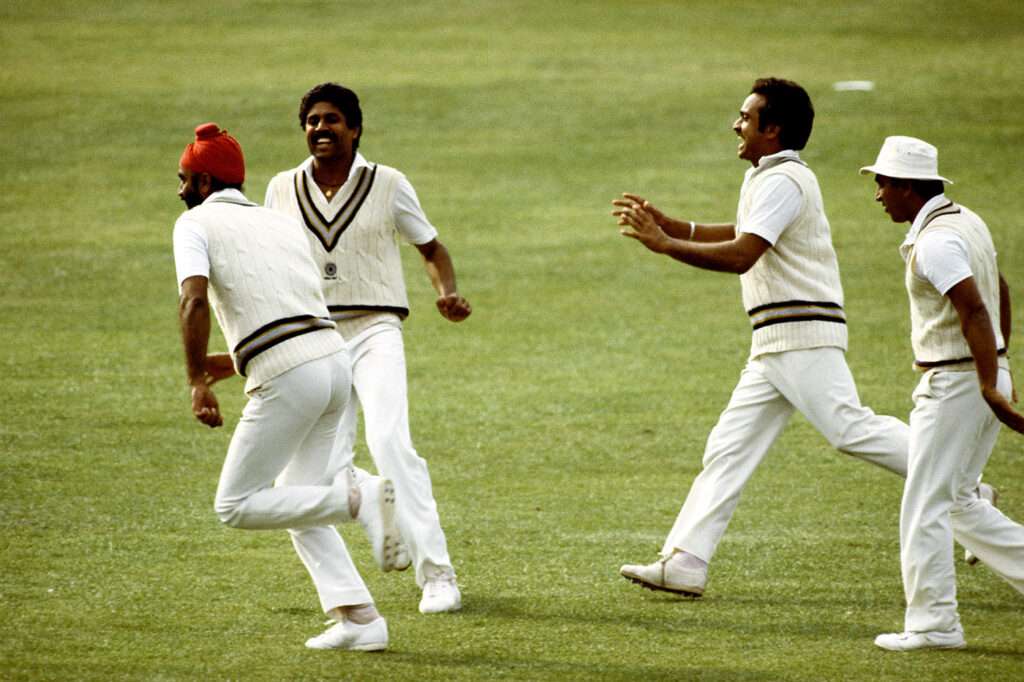
The Windies won the toss and decided to field first in Manchester’s Old Trafford Stadium. Mind you, ODI matches used to have each side bat for 60 overs back then. India lost Krishnamachari Srikkanth’s wicket quite early. The other opener, Sunil Gavaskar, who was arguably the best batter in the world, was dismissed before the team hit the 50-run mark too.
At this time, West Indies had what many still call the greatest pace bowling attack of all time. Malcolm Marshall, Michael Holding, Andy Roberts, and Joel Garner formed the ‘Fearsome Foursome’. Any one of them could annihilate a batting attack on their own.
Check Out: IND vs WI 1983 World Cup
Mohinder Amarnath and Sandeep Patil did provide some stability, but India was 125-4 when both of them departed. While India kept losing wickets from one end, Yashpal Sharma stood firm on the other. Solid late-inning partnerships with Roger Binny and Madan Lal took India to a solid score of 262-8 at the end of their inning as Yashpal Sharma scored 89.
In response, the West Indies got off to a fine start as their opening pair got the team to 49 when Desmond Haynes ran out. From this point on, the West Indian collapse began. The world champions kept losing regular wickets to the point they fell to 159/9. With an assured loss in sight, Roberts and Garner built a 71-run partnership for the 10th wicket.
But this was to no avail, as the Windies were all-out for 228 and India had done the improbable, winning the first IND vs WI 1983 World Cup match.
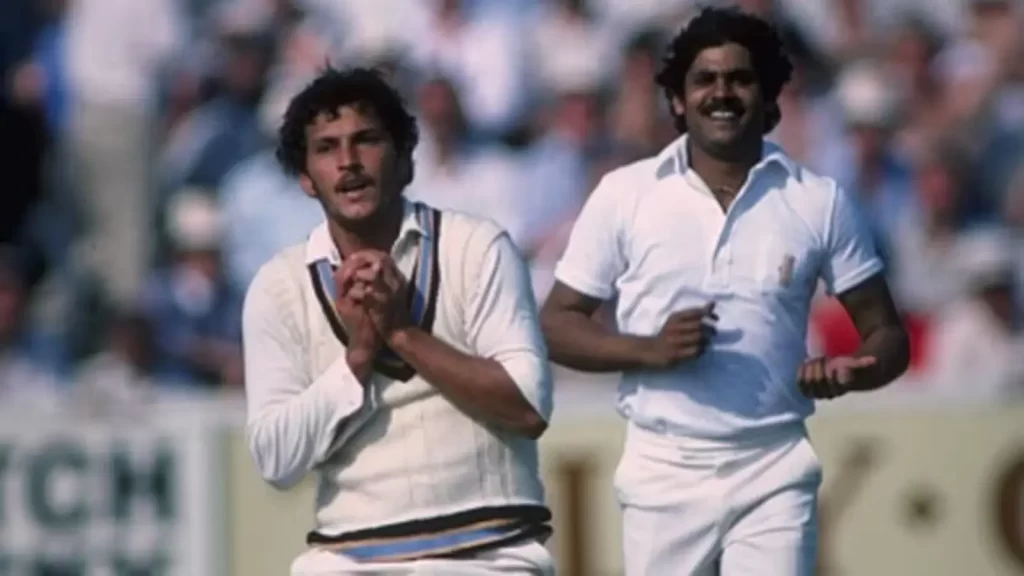
When India met the West Indies in the group stage once more, Kapil Dev’s men had defeated Zimbabwe and had been thrashed by Australia, so this was a crucial match for both teams, as the winner would most likely make it to the semi-finals. Now came the second India vs West Indies 1983 World Cup match, being played at The Oval in London.
West Indies won the toss once again, but this time decided to bat first. Opener Gordon Greenidge lost his wicket early, which prompted Vivian Richards onto the crease. Sir Viv, first with Haynes and then with Captain Lloyd, took the Indian bowlers to task, utterly demolishing the Indian medium-pace core and scoring 119 runs before being dismissed. At the end of 60 overs, the scorecard for the West Indies read 282-9.
With all their might, and a fine inning of 80 by Mohinder Amarnath, India could not even get to an arm’s length of the target, being all-out for 216, losing the match by 66 runs.
After this match, India first defeated Zimbabwe again. This match was the site of the legendary Kapil Dev 175 scorecard, which was the largest ODI score ever back then. India then demolished Australia in the return fixture to make their way into the semi-final of a World Cup for the first time.
In the semi-final, India took on the home team and favourites of many, England, and won the match by six wickets to set up another date with the West Indies.
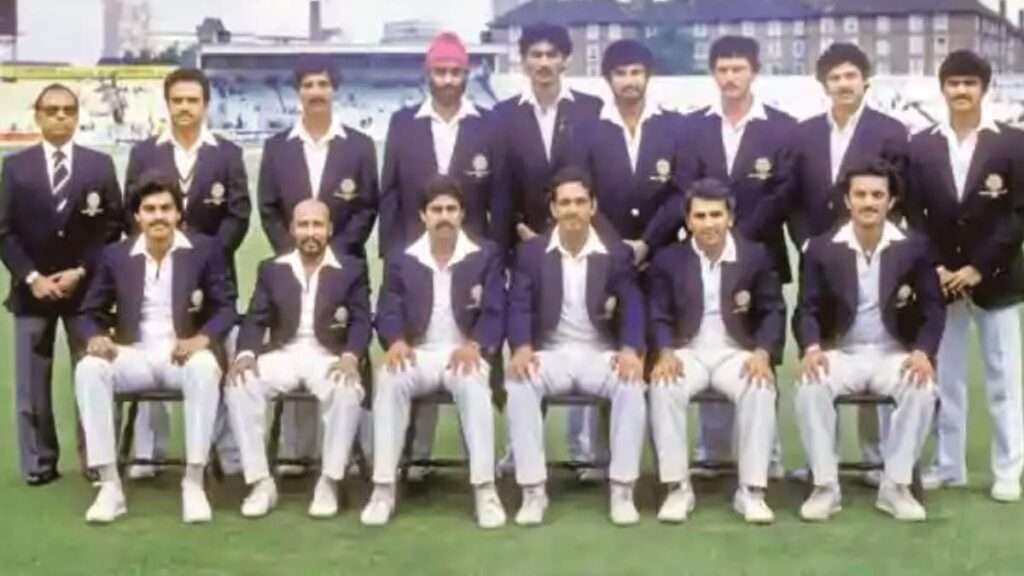
Just a reminder. India and West Indies had faced each other twice in this tournament. The first match was unexpectedly won by India, while the West Indies took their win back in the second. The third and final chapter of this three-match series would take place in the 1983 World Cup final.
Bing played in the mecca of cricket, Lord’s, the final saw the Windies win the toss and elect to field first. This started looking like the correct decision from the get-go as Sunil Gavaskar was dismissed in the very first over.
However, Kris Srikkanth and Mohinder Amarnath got together for a decent partnership. Despite that, India kept losing constant wickets and the team was dismissed for 183. With such a low score agains the mighty West Indies in the final, everyone except the Indian team itself lost all hope.
Coming out to bowl for the final time in the 1983 World Cup, the Indian bowlers hit the deck running. They scalped Greenidge’s wicket early, but then came the danger man in Viv Richards, who along with Desmond Haynes started forming a partnership that could end the match.
Then came the iconic catch. With Richards on 33, he looked to hit Madan Lal’s ball out of the ground. But the connection was not perfect. Kapil Dev ran several yards backwards to take what might have been the greatest catch in World Cup history.
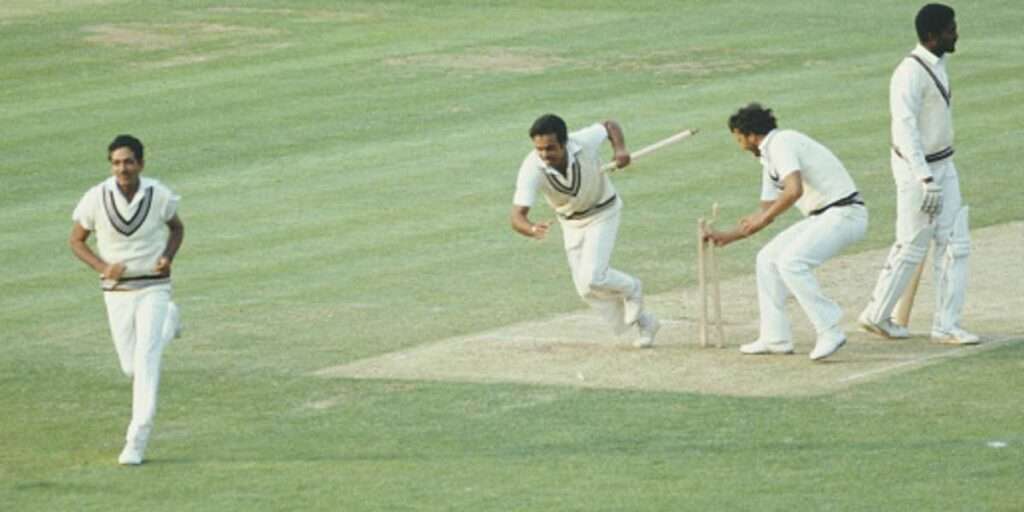
From that point, the West Indies collapsed, with the final wicket falling at 140, India had won this three-match series, and more importantly, the World Cup.
Get the Latest Player News at IceCric.News and Follow for Live Updates – Facebook & Instagram.


